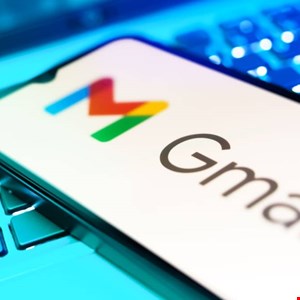- I recommend the Pixel 9 to most people looking to upgrade - especially while it's $250 off
- Google's viral research assistant just got its own app - here's how it can help you
- Sony will give you a free 55-inch 4K TV right now - but this is the last day to qualify
- I've used virtually every Linux distro, but this one has a fresh perspective
- The 7 gadgets I never travel without (and why they make such a big difference)
Google to Switch on E2EE for All Gmail Users

Google today announced a major new initiative set to boost corporate security, compliance and data sovereignty efforts, by making end-to-end encryption (E2EE) available to all users.
Announced on the anniversary of the launch of Gmail, the plan is to roll out E2EE in beta – first to users within the same organization, then all Gmail users, and finally users of any email service.
The tech giant explained that it has worked hard behind the scenes to overcome the technical complexity traditionally associated with encrypting email data at rest and in transit.
“The Secure/Multipurpose Internet Mail Extensions (S/MIME) is a protocol that enables sending digitally signed and encrypted messages. It is typically used for highly sensitive emails among regulated organizations, such as government agencies and businesses that work with them,” Google said.
“While more organizations have real needs for E2EE emails, few have the resources to implement S/MIME. IT teams need to acquire and manage certificates and deploy them to each user, resulting in additional efforts and costs. And end users have to figure out whether they and the recipient have S/MIME configured (few do) and then go through the hassle of exchanging certificates before the encrypted emails can be exchanged.”
Read more on E2EE: Experts Dismayed at UK’s Apple Decryption Demands
Alternatives to S/MIME might require sharing of encryption keys with email providers, undermining data privacy and increasing sovereignty risks, Google added. Proprietary point solutions might introduce extra complexity, requiring custom apps, portals or browser extensions.
Google claimed its E2EE service can be enabled in “just a few clicks” without the need to exchange custom certificates or use specialized software. Because encryption keys are controlled by the customer and not the provider, it is extra secure.
While the experience is seamless for recipients who are Gmail users, those who aren’t will receive an invitation to view an E2EE email in a restricted version of Gmail. The recipient will then need to use a guest Google Workspace account to securely view and reply to the email.
It remains to be seen what governments and law enforcers think about the offering. The likes of Apple and Meta have been often criticized by authorities for failing to provide backdoor access to content during criminal investigations.
Last month, Apple shocked the world when it chose to remove E2EE for UK iCloud customers, rather than accede to demands from the British government to let it access encrypted customer content.
Image credit: JarTee / Shutterstock.com

